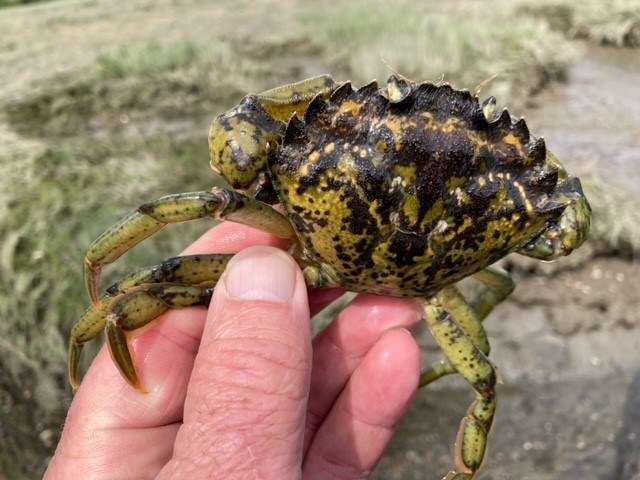The Friends of Semiahmoo Bay Society (FoSBS) was alerted to the presence of the highly invasive European Green Crab in the Fraser Delta region in late 2019.
Learning of its capability to erode estuarine banks and to destroy important salt marsh and eelgrass meadow habitats, FoSBS quickly developed a trapping program to monitor this crab. FoSBS is a provincially registered, non-profit society working as environmental stewards in conservation, citizen science, education and restoration in Boundary Bay and the Fraser River Delta.
Arriving in Puget Sound and the Strait of Juan de Fuca in 1998, the European Green Crab has become one of the 10 most unwanted invasive species in the world. Due to the ability of early life stages of the crab to travel easily as plankton via ship ballast water and ocean currents, European Green Crab has continued to spread throughout the Pacific Northwest. Washington State confirmed the crab off San Juan Island in 2016 and Fisheries and Oceans Canada discovered it in Boundary Bay in 2019.
It is an effective predator of native clams and oysters, destroys eelgrass beds and negatively impacts native invertebrates and fish.
This year FoSBS is conducting crab trapping at four Boundary Bay sites, one of which is led by partner organization A Rocha. Volunteers are mostly catching native shore crabs, hermit crabs, snails, sculpins and stickleback. Two recent trappings found first three then four male European Green Crabs at the Blackie Spit area of Crescent Beach. Trapping began in May and continues on low tide days. Full data analysis is planned for this fall.
This environmental monitoring program is volunteer driven and we thank them all. People interested in participating in the program should contact FoSBS at: www.birdsonthebay.ca/marine-projects. Volunteers of all ages are required to complete a training program so that they can be listed on the FoSBS marine license.
Editor’s note: Nature Notes is a monthly column written by the Delta Naturalists and or their partner organizations.



